While Phoenix is not exactly known for its night skies, Arizona is. On a new moon night, the desert lights up with the cosmos around us. There are quite a few cool astronomical events that will occur next year that you will be able to see within town and on the UAT campus.
Super moons
There are going to be three super moons next year; February 9th, March 9th, and May 7th. What is a super moon? The moon orbits in an oval shape around Earth; closest approach (perigee) at about 225,600 miles away, and farthest (apogee) at about 252,000 miles away. That’s a difference of 25,000 miles! A super moon is when the moon is at its closest approach around Earth and it is a full moon. How does that effect how big the moon in the sky? Between the perigee and apogee, the size can change up to 14%. However, day to day we only see a fraction of a size difference. Let’s scale it down a bit; a football field. Visualize that you are standing on a goal line and someone else is on the other goal line, 100 yards away from you. That mimics the distance between the Earth and Moon at apogee. If the other person walks up to the 89 yard line (11 yards), that’s roughly where the Moon at perigee would be. If you were to close your eyes while that person was walking, they would appear just slightly bigger, it wouldn’t be by much though. BUT, the moon doesn’t move like that, so neither does the person. It takes them two weeks to walk that 11 yards. Day to day they are not going to appear to be that much bigger.
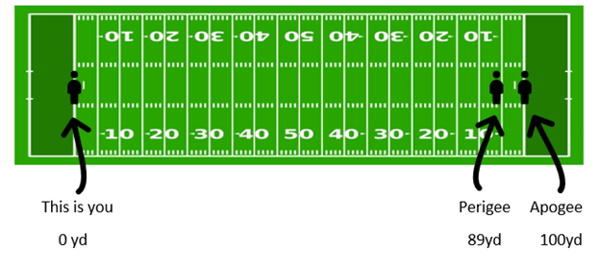
Lunar Eclipse
Visible from Phoenix, there are two lunar eclipses: July 5th and November 30th. There are two kinds of lunar eclipses: total (umbra) and partial (penumbra). Both that are visible from Phoenix are partial penumbra. Let’s explain a lunar eclipse though. A lunar eclipse occurs when Earth travels between the sun and the moon and casts a shadow over the moon. In the diagram below you can see the cone of the shadows.

Looking at the images below, a total lunar eclipse would occur in the center, light grey, ring. A total penumbral eclipse would occur completely within the outer, dark grey ring. Viewing the images below, in 2020 we will be able to see two partial penumbral lunar eclipses.
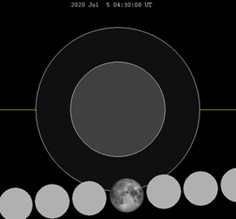
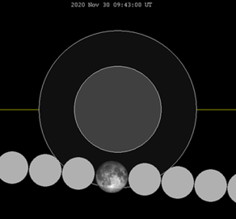
Meteor Showers
There are quite a few meteor showers each and every year but there are a few big ones that will occur next year. Lyrids meteor shower April 21-22th and the Geminids meteor shower December 13-14th. These particular meteor showers will be occurring while the moon is close to a new moon phase. Meaning the sky is going to be quite a bit darker than a full moon night. Right within Phoenix or even the UAT campus you wont be able to see that many shooting stars. However, with a short hike up South Mountain, the night sky significantly improves. A majority of the shooting stars will come from certain areas of the sky. Watch for the Lyrids by looking for the Lyra constellation. Lyra is found by looking for one of the brightest stars in the sky, Vega. The Geminids meteor shower will best be found near Gemini. Gemini can be found by locating Castor and Pollux, the two brightest stars in Gemini. It is also near Orion, so if you can find his belt that will be pretty close.
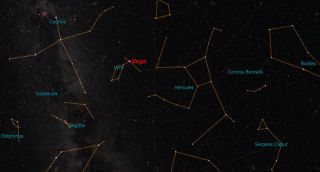

Jupiter and Saturn
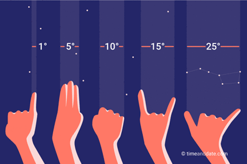
Identifiable with the giant red storm cloud and stellar rings, Jupiter and Saturn are our solar systems two largest planets. Visible to the naked eye, these two planets can be found with relative ease. And wit a basic pair of binoculars you may even be able to see Saturn’s rings, or Jupiter’s moons. But on December 21, these two planets will be meeting in the night sky. They will be 0°06' apart, in simpler terms that is .1° apart. Looking at the image below that is less than one (average) pinky width, at arm’s length, apart.
Bonus: Solar Eclipse
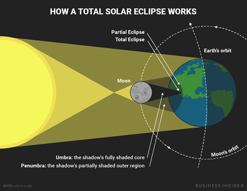
In the U.S. we will have to wait until 2024 to see another eclipse, but there are two occurring around the world in 2020. The first will be an annular solar eclipse on June 21st, visible across Central Africa and Southern Asia. And a total eclipse on December 14th, in South America, through Chili and Argentina. The moon will be between the sun and Earth during this time.
So, what is the difference? An annular solar eclipse occurs when the moon is at apogee (farthest away from earth). When the moon is at apogee, the apparent diameter is smaller than the sun’s. At this distance it is ultimately unable to cover the sun completely. A total lunar eclipse occurs when the moon is at perigee (closest to earth). The moon will be able to completely cover the surface of the sun, allowing us to see the sun’s corona. WARNING: The only time it is safe to look at the sun is during the brief moments of totality during a total solar eclipse. Proper sun viewing glasses and telescopes are required to look at the sun at any other time. Welding masks DO NOT properly protect your eyes.
UAT offers a Space Exploration course as a Special Topic in Technology class. The overall goal of the class is for everyone to work together to go beyond their limits to create a functioning weather balloon payload. You can read about their latest expedition here.
References:
https://en.wikipedia.org/wiki/November_2020_lunar_eclipse
https://en.wikipedia.org/wiki/July_2020_lunar_eclipse
https://in-the-sky.org/news.php?id=20201221_19_100
https://www.space.com/27033-vega-star-harp-constellation-lyra.html
https://www.timeanddate.com/astronomy/measuring-the-sky-by-hand.html
https://www.timeanddate.com/eclipse/annular-solar-eclipse.html
https://nationaleclipse.com/maps/map_12142020.html
https://www.businessinsider.com.au/solar-eclipse-hurricane-seen-together-nasa-satellite-video-2019-7
https://www.nasa.gov/audience/forstudents/k-4/stories/annular-eclipse





Comment